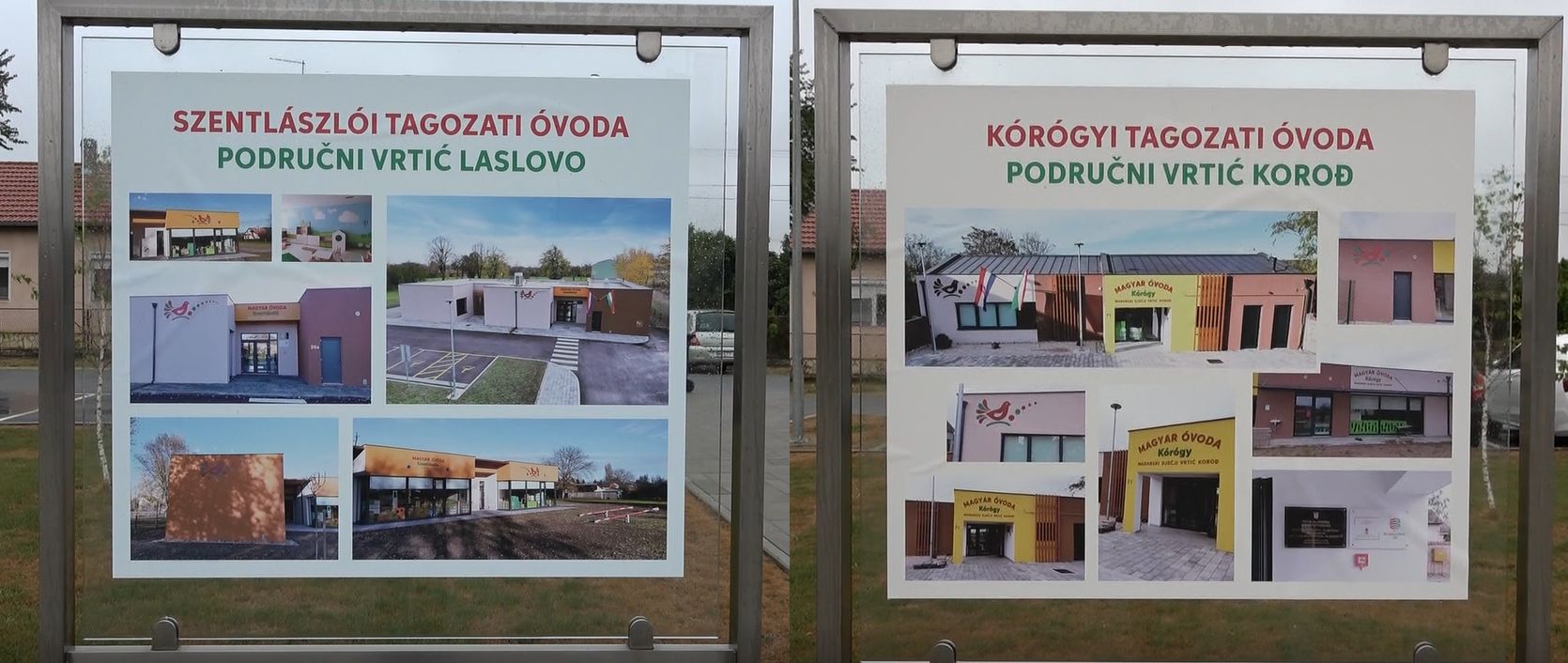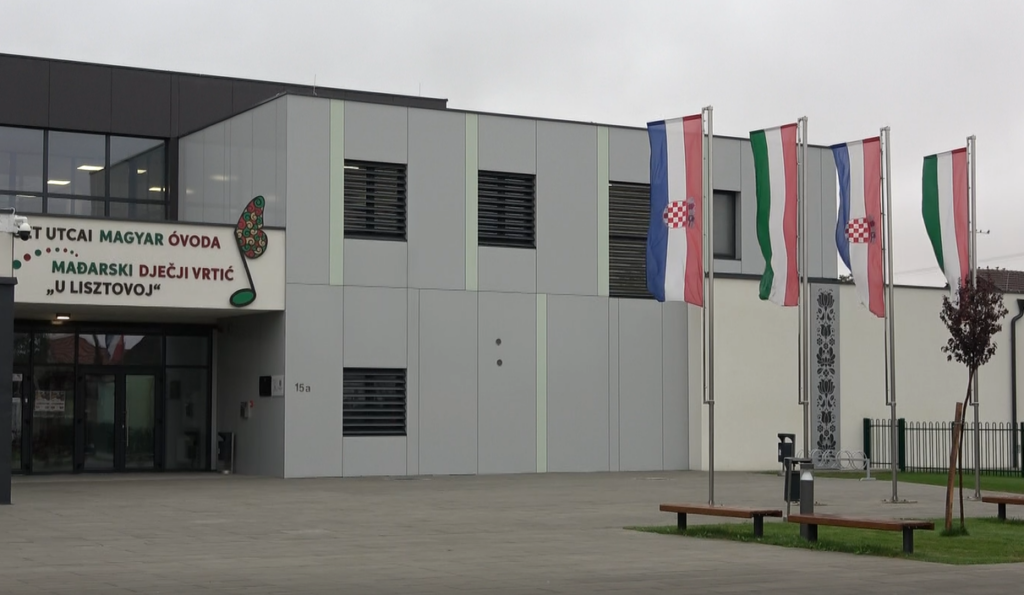The https://english.atlatszo.hu use cookies to track and profile customers such as action tags and pixel tracking on our website to assist our marketing. On our website we use technical, analytical, marketing and preference cookies. These are necessary for our site to work properly and to give us inforamation about how our site is used. See Cookies Policy
Almost no children in the kindergartens in Croatia built with Hungarian taxpayers’ money at a cost of HUF 1.3 billion
We were basically thrown out of the Hungarian kindergarten in Pélmonostor, which was built in Croatia with Hungarian taxpayers’ money. The director did not respond to our official written requests, and on the spot, he ordered us out of the building on the grounds of children’s rights, and did not answer our questions about the number of children. Perhaps not coincidentally, the publicly funded facility is almost completely empty, which raises the question of whether such a large-scale investment was really necessary. Video report from Croatia, where we were accompanied by independent MEP Ákos Hadházy.
In the summer of 2022, the Democratic Community of Hungarians in Croatia (HDMK) reported that construction work was progressing well and that the Hungarian kindergartens in Pélmonostor, Kórógy and Szentlászló in Croatia, for which the Hungarian government had granted 1.3 billion HUF, would soon be completed. The facilities were finally inaugurated in the winter of 2023 and 120 children were expected to join „the Hungarian-language kindergarten programme”. However, we did not see even a fraction of this number on the ground.

At last November’s inauguration, Róbert Jankovics MEP, President of HMDK, said that their main message is that where kindergartens and nurseries are built, there is a future. Their aim is that every Hungarian who „has not had the opportunity so far should have his or her child learn Hungarian at kindergarten age”. He added that
the kindergarten system is planned to be free of charge, without parental contribution.
He also underlined, however, that there are no children enrolled yet because „an extremely complicated administrative process is taking place in parallel with the completion of the construction”, but they hope to have all the permits in place by the end of January 2024 and to start enrolment. This has probably happened, but Átlátszó was told at the beginning of the summer that the institutions are completely empty because there are not enough Hungarian children to go.
No answers and no children
We could not check the veracity of the information at the time, as the summer holidays were on. However, we sent an enquiry to the relevant Europe AP association and to the Democratic Community of Hungarians in Croatia to find out how many kindergarten children would be allowed to attend the Hungarian kindergartens/day nurseries built in Pélmonostor, Kórógy and Szentlászló from September.
Although we have contacted the two organisations several times, neither of them has been worthy of a reply, so we decided to visit the facilities in Croatia personally. We asked Ákos Hadházy – who also received similar information – to join us to see if they would be willing to talk to a Member of Parliament. This tactic did not really work either.
We first visited Pélmonostor, where we were kindly welcomed at the beginning and shown around the building. Then, at the kindergarten section, we were stopped by the director, who asked us to leave. All this after we saw that the nursery classroom was completely empty, while the 2 kindergarten rooms were all full of life: 3-4 children and a kindergarten teacher. We tried to find out from the director how many kindergartners they had, or if there were more than 3-4 children, where the others were now, but we got no answer.
After leaving the huge facility (the cultural centre in Pélmonostor consists of a Hungarian kindergarten, a Hungarian library and a 150-seat event hall, and they have also created a park and two playgrounds on Liszt Ferenc Street, as well as 68 parking spaces), we headed towards the villages of Szentlászló and Kórógy, about 40 minutes away.

Day nurseries in Szentlászló and Kórógy – the gates of the buildings were already closed when we arrived
There they were already prepared for our arrival and all the gates were closed. So all we could see from the outside was that there was some life in the institutions. In Szentlászló, even the awnings were pulled down on the windows of the classrooms (in the pouring rain) when we bypassed the building for the second time, but before that we saw only an empty room. In Kórógy, two cars, a couple of colourful children’s coats and a few umbrellas indicated that they were in the building.
Of course, our aim was not to film children, we just wanted to find out whether or not the Fidesz government was spending Hungarian taxpayers’ money wisely. According to the locals, there are about 400 Hungarians in Pélmonostor, a town of 7,900 inhabitants, while Kórógy itself has only 400. This raises the question of how much it is worth building such large facilities with Hungarian public money in Croatia. In Szentlászlo we found out that about 10 children are usually seen playing in the yard.
Written and translated by Eszter Katus. Hungarian version of this story can be found here. Cover photo: A large facility in Pélmonostor with 3-4 kindergartens. The contractor was Presing d.o.o. from Eszék

